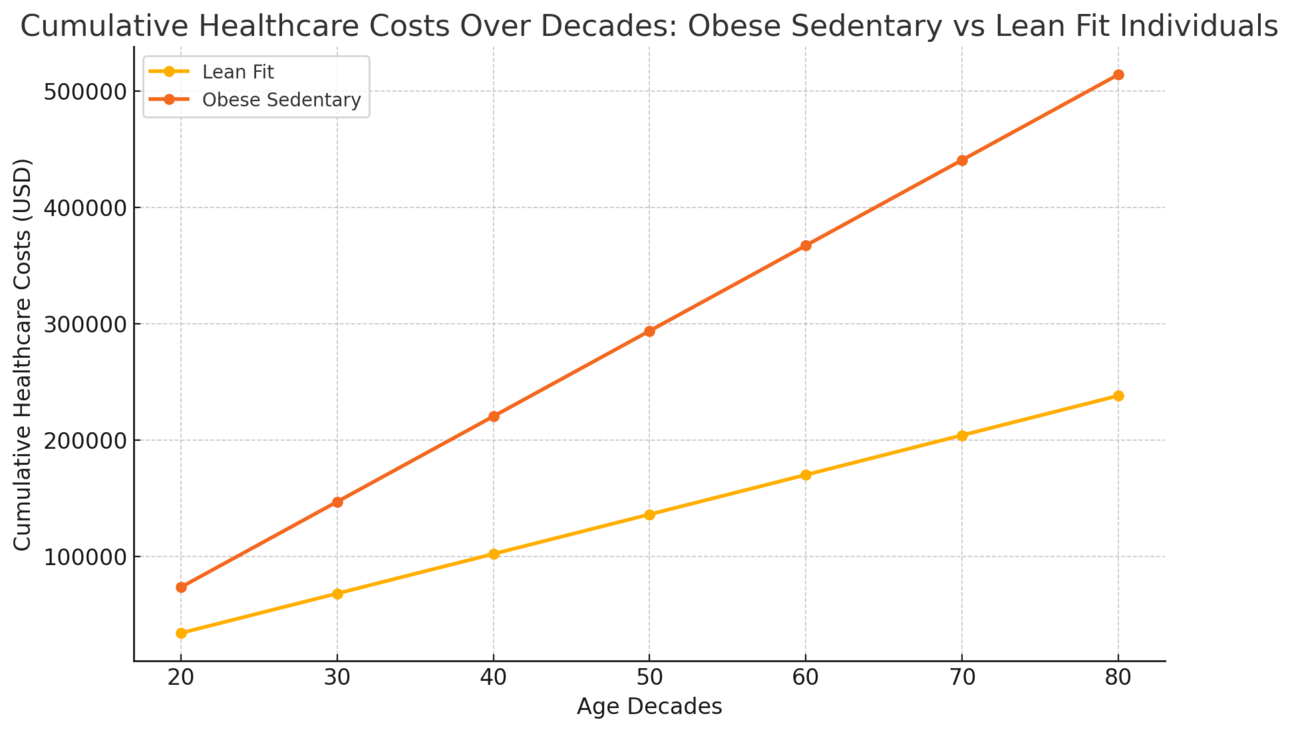As a self-proclaimed educator in the biohacking space, one thing I rack my brain around is how to create LASTING behavior change in individuals.
I consistently see people “talk” about the change they are going to make in their lives, yet year after year they return back to trek the hedonic treadmill.
Whether it’s diet, exercise, or just progress in general, most humans spend their whole lives taking one step forward and two steps backward.
I have to be completely honest - I can’t imagine not working out (and I know thousands of you reading this email feel the same way).
It’s in the fabric of my DNA.
Yet, look at this staggering fact:
According to the Centers for Disease Control and Prevention (CDC), in 2020, 46.3% of U.S. adults did not meet the recommended guidelines for either aerobic or muscle-strengthening activities. (CDC) This suggests that nearly half of American adults engage in physical activity less than twice per week or not at all. The CDC’s guidelines recommend at least 150 minutes of moderate-intensity aerobic activity and muscle-strengthening exercises on two or more days per week. (CDC)
Basically, this means that only one half of all Americans even work out more than two times per week.
Let me be clear.
I don’t care how many peptides you take.
I don’t care how many hormones you inject.
I don’t care how much SLU-PP-332 you pop daily.
If you don’t eat clean, live insulin controlled, and exercise, NONE of this matters.
So why am I bringing this up today?
Yesterday, Jay and I launched Life Enhanced.
It’s a backstage pass to our lives.
You’ll learn about all the peptides, biohacks, and everything we do over the course of the week to live fully optimized.
But for the brave souls who ACTUALLY want to make lasting change in their lives, we are offering a private, group coaching community.
Why are we doing this?
First, let’s look at people who set goals:
Research indicates that a significant number of individuals struggle to maintain their New Year’s resolutions. A 2016 study found that only 9% of Americans who set resolutions felt they were successful in achieving them by year’s end. (Discover Happy Habits)
Similarly, a 2007 study revealed a 12% success rate among those who made resolutions, despite 52% of participants expressing confidence at the outset. (Discover Happy Habits) These findings suggest that while many people set New Year’s resolutions, a relatively small percentage follow through to completion.
At best, 10% of people actually ever follow through and achieve their goals.
Why?
In my opinion it has everything to do with our environment.
If we constantly surround ourselves with people and things that don’t support our goals, they often fall flat.
Conversely, let’s look at people who change their environment and surround themselves with people who have similar goals.
In cases where individuals use structured goal-setting with community support (like writing down goals, creating action plans, and sharing weekly progress updates), they are 33% more likely to achieve their goals compared to those who set unwritten goals without support. Specifically, those with community support have a 76% success rate, versus a 43% success rate for those without. (Michigan State University Extension)
So if you are serious about:
Burning fat
Building muscle
Learning how to use peptides
Getting hormonally optimized
Being the best physical avatar being you were destined to be
Does your environment support your goals?
If it does, then great, keep up the good work!
But if not, look yourself in the mirror and ask yourself what you are doing to show up as the highest realized version of yourSELF.
And more importantly, if you want to have the ULTIMATE community support group, where you will be in the trenches with other people on the optimized path…
Check out the FFO version of Life Enhanced.
And for all the numbers folks out there like me, let’s close out with some facts.
An obese, sedentary individual incurs approximately $2,505 more annually in healthcare costs due to obesity (en.wikipedia.org) and an additional $1,437 due to inactivity (cdc.gov), totaling around $3,942 in extra healthcare expenses per year. By contrast, a lean, active, and optimized individual generally avoids these additional costs, suggesting an annual savings of roughly $3,942 by maintaining a healthy weight and engaging in regular physical activity.
Now let’s extrapolate those numbers over a lifetime.

Yes, you are reading that right.
By the end of their lifetime, a lean, fit individual could save an estimated $275,940 in healthcare costs compared to an obese, sedentary individual.
What is your health worth to you?
For me, it’s priceless.
But HOPEFULLY it’s worth $275k or more.
Best,
Hunter